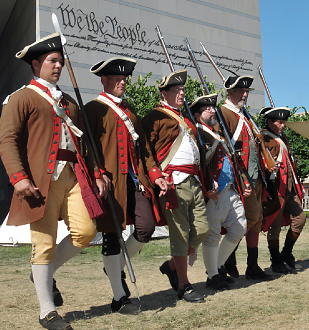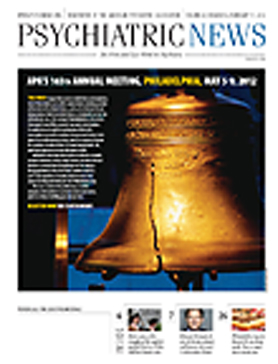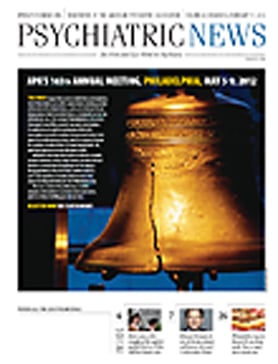Nicknamed “America’s most historic square mile,” Independence National Historical Park is a must for APA members and their families coming to the city recognized as the birthplace of America.
Philadelphia’s Independence Park, administered by the National Park Service, preserves several sites associated with the American Revolution and the nation’s founding, most of which are located in the vicinity of the four landscaped blocks between Chestnut, Walnut, 2nd, and 6th streets.
Principal among these, of course, is Independence Hall, where the Declaration of Independence and the United States Constitution were debated and adopted in the late 18th century. The hall was also the principal meetinghouse of the Second Continental Congress from 1775 to 1783 and the Constitutional Convention in the summer of 1787.
According to the National Park Service Web site, visitors interested in a guided tour to Independence Hall must have a tour ticket with a specific day and time. “Walk-up tickets” are available for free at the Independence Visitor Center at 6th and Market streets starting at 8:30 a.m. The first tour starts at 9 a.m. During the busy season, tickets are often gone by 1 p.m. Tickets for Independence Hall may be reserved in advance for a fee of $1.50 per ticket through the National Park Reservation system by calling toll free at (877) 444-6777.
Also located on Independence Mall within the park is the National Constitution Center, which brings the nation’s founding document to life through multimedia exhibitions, live performances, and interactive, educational resources. The center’s core exhibition, “The Story of We the People” tells the story of the Constitution—its history and its contemporary relevance—through more than 100 multimedia exhibits. It also features a powerful, award-winning theatrical performance of “Freedom Rising” and Signers’ Hall, where visitors can walk among 42 life-size bronze statues of the Founding Fathers who were present the day the Constitution was signed. Visitors can also add their “signature” to this important document.
Other feature exhibitions at the center include “Discover the Real George Washington: New Views From Mount Vernon” and “Spies, Traitors, and Saboteurs.” The latter, created by the International Spy Museum, reveals stories of espionage, treason, and deception in the United States from 1776 to today.
At least one other important stop in Independence Mall is The Declaration House (or Graff House), where Thomas Jefferson wrote the Declaration of Independence. Located at 7th and Market streets, the original structure was torn down in 1883. Photographs of the site enabled the National Park Service to build a faithful replica of the original building in 1975.
In June 1776, Jefferson was part of a Virginia delegation to the Second Continental Congress to sever ties from Great Britain. While that historic body was meeting, Jefferson was assigned to a committee asked to write a declaration that enumerated the causes that led to that severance. Finding his lodging in the heart of the city uncomfortable, he removed to the rooms of Jacob Graff, situated on the outskirts of town, surrounded by fields and a stable across the street. The house provided Jefferson with the space and distance from the city he needed for his task.
Jefferson wrote the document in under three weeks. The Declaration House exhibit includes a re-creation of the two rooms Jefferson rented on the second floor. In it, one sees Jefferson’s bedchamber, including the tiny bed he slept on (Jefferson is said to have been more than six feet, two inches tall). One of the only original items in the exhibition is a key to the front door. Jefferson entertained other members of the Congress in the sitting room.
Other sites in the park include the First Bank of the United States, which was the first bank chartered by the United States Congress, and the Second Bank of the United States, which had its charter renewal vetoed by President Andrew Jackson as part of the Bank War. The park also contains Franklin Court, which includes a skeleton of Franklin’s house on its original site with portals to view privy pits, wells, and foundation; and the United States Postal Service Museum. (For a selection of other important historic sites adjacent to or not far from the park, see below.)
More Information
Independence Hall
520 Chestnut Street
(877) 444-6777 (timed tickets)
Independence Visitor Center
6th and Market streets
(800) 537-7676
National Constitution Center
525 Arch Street
(215) 409-6600
The Declaration House
7th and Market streets
First Bank of the United States
116 South Third Street
Second Bank of the United States
420 Chestnut Street
Franklin Court and U.S. Postal Service Museum
314-321 Market Street
(267) 519-4295
…And That’s Not All
Below is a short list of other historic sites not far from Independence Hall.
Betsy Ross House, at 239 Arch Street, is the home of the woman said to be the maker of the first Stars and Stripes. Ross never owned this house, but rented here between 1773 and 1786. The house was built about 1740 and consists of three and a half floors and six rooms plus an attic. Betsy and her husband, John Ross, ran their upholstery business out of the house as well.
Stroll down the historical cobblestones of
Elfreth’s Alley and step back into America’s past. Located in the heart of Old City Philadelphia, Elfreth’s Alley is a block-long street that opened in 1702 connecting two blacksmiths’ shops near Philadelphia’s busy waterfront with Second Street, one of the growing colony’s busiest thoroughfares. Today 32 houses, built between 1728 and 1836, line the alley. They form one of the last intact early American streetscapes in the nation. Elfreth’s Alley is a National Historic Landmark District. Information about tours and visiting the Elfreth Alley Museum is posted at
www.elfrethsalley.org .
St. Augustine’s Church, located on the northwest corner of 4th and New streets (between Race and Vine in the shadow of the Benjamin Franklin Bridge), was the first permanent establishment of the Catholic Augustinian Order in the United States. Such notables as President George Washington, Commodore John Barry, and merchant Stephen Girard contributed to the building funds of the original church on this site. Father Matthew J. Carr, OSA, began St. Augustine’s in 1796 to serve the increasing number of German and Irish immigrants who settled in the northern sections of the city. The original church was burned to the ground on May 8, 1844, during the anti-Catholic “nativist” riots. More information is posted at
http://st-augustinechurch.com .
The graves of Benjamin Franklin and four other signers of the Declaration of Independence can be viewed at Christ Church Burial Ground at Christ Church on 2nd Street above Market Street. One of these signers is Benjamin Rush, considered the father of American psychiatry. It is his face that appears on APA’s seal. More information about the graveyard is posted at
www.christchurchphila.org/burial .
Arch Street Friends Meeting House, at 4th and Arch streets, is the oldest Friends Meeting House still in use in Philadelphia and the largest in the world. It was built in 1804 and enlarged in 1811. The Philadelphia Yearly Meeting of Friends living in Philadelphia, the southern half of New Jersey, Delaware, and parts of Maryland is held here every spring. Monthly business meetings are also conducted here—as they have been since the 19th century. More information is posted at
www.archstreetfriends.org/index.html .



